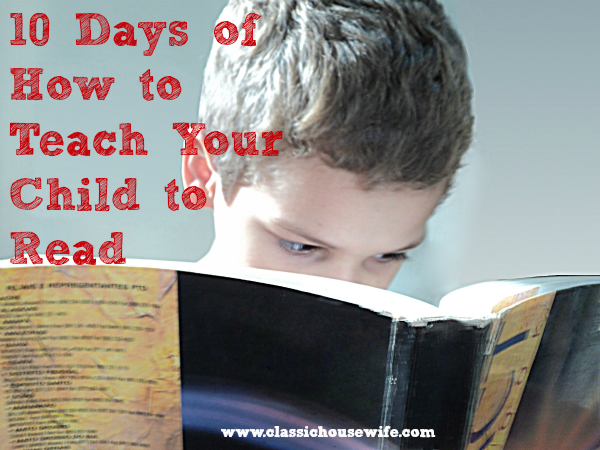Struggling Readers
Learning to read is a journey. It has its ups and downs. Reading is not an innate skill that we are born with like learning to crawl or walk. It takes a lot of work to learn to read, and when your child struggles it can be very frustrating for everyone. Identifying hurdles and weaknesses is the first step in helping your child overcome them. There are so many reasons that a child might struggle, and so many ways in which that might manifest itself, that I won’t be able to cover them all here. Let’s take a look at some of the main issues that might arise.
Lack of Confidence
A lack of confidence can arise for any number of reasons. With my 2nd daughter it happened because she was comparing herself with her older sister and how well she could read at that point, and she couldn’t see what she was doing as “reading.” She thought she wasn’t doing well, that she couldn’t do it. When the “I can’ts” settle in, it’s a good sign that confidence is a problem. For Drama Queen, I had to prove to her that she could. Taking a hands on approach with what we called “Word Pockets” and word families, I had my daughter read a family of words to me. When I counted out how many words she had read and showed her that she COULD read, her confidence swelled and she read another word family to me. That little spark of confidence grew as the days passed and so did her ability. Whatever the reason for it, the key to battling a lack of confidence is helping your child see what they CAN do, what they HAVE learned so far, and assuring them that each step is a part of the learning process and is a success. Encourage good effort and cheer success and help your child discover the confidence they need to keep going.
Disinterest
As adults, some of us are more interested in reading than others. Personality types and interests differ and the same is true of children. Some children are simply not as interested in reading. They may not dislike it or struggle with it, but getting them to read and continue learning can be a struggle when they are not interested. Sometimes the disinterest comes because they are not ready, other times it is because they are more interested in other pursuits. In both cases it can be helpful to keep the reading lessons short and then “sneak” reading into their day in other ways. Practice reading the directions on the math or science lesson. Read items from the restaurant menu or tv listing. Read directions for craft projects or the captions on coloring pages. Sneaking this in not only helps them practice but also shows how reading is a part of their other interests, too. Also, including reading lessons and read alouds that appeal to their interests will help a little as well. When my son once announced that he didn’t really like or care to learn to read, I asked him about the How to Train Your Dragon books we’d been reading at bedtime. I asked if he wouldn’t like to be able to read books like that some day? He replied, “Well, yeah, I guess, maybe books like those.” I could see that he realized how he would need to learn to read better to be able to read those interesting books.
Incompatibility with Learning Style
One common issue that many kids have with learning to read is that it doesn’t suit their learning style at all, and this can lead to both a disinterest and a lot of “I can’ts!” Fortunately this also relatively easy to accommodate. For children who need to wiggle, reading can be done in a rocking chair or a swivel chair. For those who need to say it and hear it you can teach a lot of it aloud without looking at the book as much. Using letter tiles, a dry erase board, or sing song rhymes are all useful ways to employ learning styles. It can be a bit tricky if your child is younger and you aren’t yet sure of the best way they learn but if that’s the case, you really only need to try things and find what they enjoy the most. Later, these preferences will serve as clues to learning styles. For now, you can use the preferred methods to make learning to read more enjoyable.
Check out this video about how my son and I “talked” a lot of our lessons when he was four and a half.
Learning Difficulties
As your children grow, you may find that they continue to struggle and suffer from self-confidence issues. You may begin to suspect that your children might have a legitimate learning difficulty of some kind. I have to be honest and say that we have not dealt with anything like dyslexia here in our home. But I do remember how frustrating it was when Drama Queen struggled for so long, and I remember how I felt when I realized she had all the symptoms of a sensory processing disorder. I also know that we mothers can tend to be very hard on ourselves and worry about our children a lot! When more serious learning difficulties arise, the problems and the solutions will be different for each family. But in all cases, the solution begins with paying attention to your child’s cues, observing how he learns, where he struggles, what he needs and doesn’t need. Taking note of these things will help you learn where to go and how to proceed. If you suspect your child might have dyslexia, Lexercise has a free online assessment. Bloggy friends Kris (Weird Unsocialized Homeschoolers) and Maureen (Spell Outloud) have written quite a bit about Lexercise and their online tutoring. You might also want to check out another 10 day series going on right now which is focusing on dyslexia.
Testing
Testing is something I don’t frown on using but encourage using with CAUTION. Why? Testing can give you a ball park idea but every kid is different and I discourage using testing as a measure of whether or not your child is “behind.” When Princess was in second grade she was very slow and cautious with her math. When we had her tested at the end of the year (for my husband’s peace of mind) she did very well on the test but on the math section she didn’t finish in the allotted amount of time. Technically she failed the math section because she had too many left unanswered, but all the questions she did answer she had answered correctly. This is a perfect example of why I use testing loosely. I could tell that she had a grasp on the concepts but she needed to pick up speed. I also knew that speed would come with time. She is still my slowest at math but over the years she did learn to become faster at it, she just needed time. The same is true for reading tests. Use them to get a ball park idea, use them again later to measure growth, but allow room for your child’s individual strengths and weaknesses and time to grow.
To test Reading Level:
- Various reading level tests at The Phonics Page
- Two reading level tests, including the San Diego “Quick Assessment” at A 2 Z Home’s Cool Homeschooling
Specific Tips for Strugglers
- Patiently encourage weak areas while strongly encouraging other strengths, kids do not always develop evenly on all sides at all times.
- Take regular trips to the library and allow your child to pick out books they are interested in (even if they are simple and silly – for now, encourage the desire to read and focus on quality reading later.)
- If mixing up letters (like ‘b’ and ‘d’) is an issue, slow down and spend some time playing games and making flash cards with those letters and words they begin.
- If comprehension seems to be an issue at the early stage of reading (still sounding out each word) have your child re-read a sentence more fluidly after he has processed each word individually. Check for comprehension at the end of the reading by asking him to retell what happened or by asking specific questions about the passage (“what was the little boy’s name?” for example.)
- If comprehension seems to be an issue at older stages, see if reading aloud or reading silently to themselves seems to be more effective. Check for comprehension by asking the child to retell it or write about it through notebooking.
- For children who frequently lose their place on the page, a ruler held along the bottom of the sentence may help.
- If your child struggles with sounding fluid and smooth while reading aloud, letting them have a small (manageable) daily task such as reading a small prayer out of a book of prayers at the start of the school day may encourage them and will give them extra practice. On the other hand, if this stresses the child out, it may do more harm than good.
- Continue practicing the phonics based word families to become more familiar with the “building blocks” of words and recognizing them by sight.
Have a struggling reader? What other tips would you add to this list?
Just joining in? Start at the beginning. (It’s a very good place to start.)
This series is a part of a blog hop called “The Hopscotch” through iHomeschool Network (previously known as “the ten days of” series.) HOP on over and hopscotch through all the other 10 Days series. While you’re there, check out the Pin it to Win It contest featuring a giveaway of products from Prufrock Press.
If you’d like to read more posts related to reading, then you may want to check out Marianne’s Homeschooling with Dyslexia, Mary’s 10 Days of Reading Aloud, or Becky’s Teaching Spelling Through Word Study!
Image Source: Young Reader by Francisco Farias Jr


